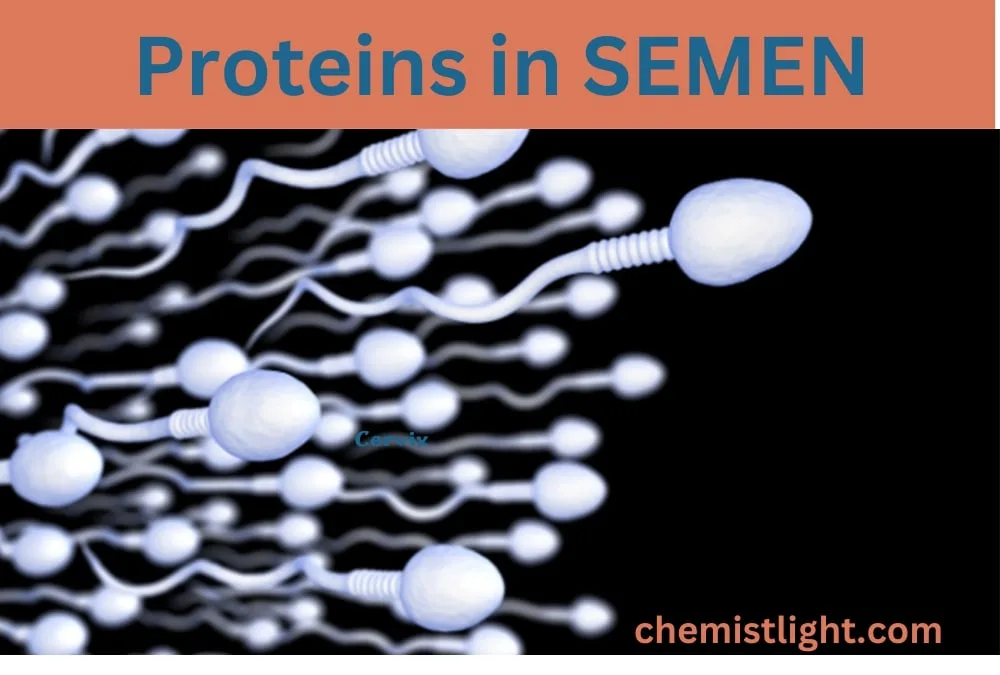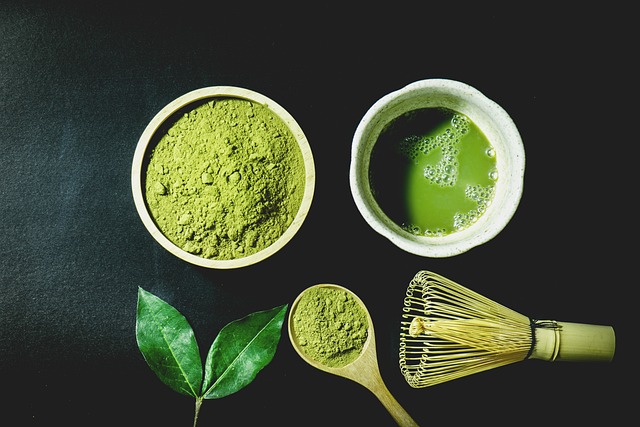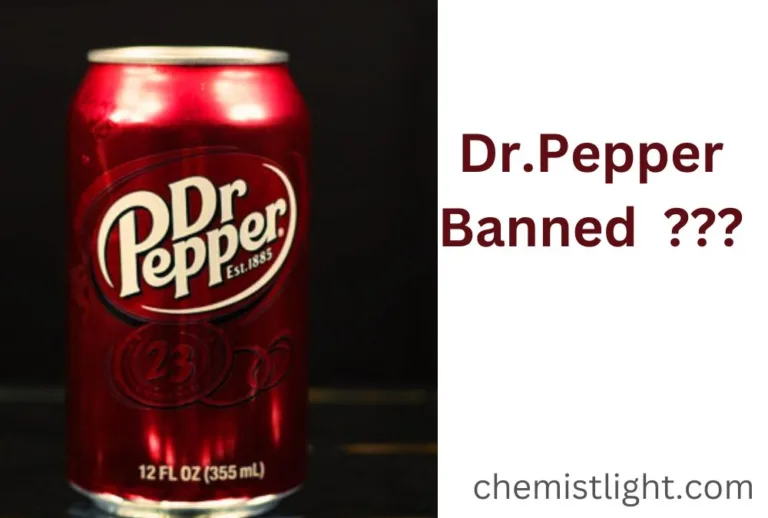Which proteins are present in semen?

Semen is a thick fluid that makes part of male reproductive process and functions. The male seminal fluid, which is the ejaculate, is defined as semen and is primarily derived from secretions of various parts of the male reproductive organs. Proteins are the major protein fractions that exists in the masculine reproductive system and are contained in semen. It may contain testis, epididymis, vas deferens, seminal vesicle, prostate gland, bulbourethral gland, and prostate gland. Semen has the primary function of reproduction, and it serves as the male element of reproduction. Moreover, it is an avenue for deposition of spermatozoa (sperm cells) in the female reproductive system during romantic encounter. The which proteins present in semen and function are described here.
Composition of Semenal Fluid
1. Spermatozoa
1. The prostate gland also constructed through the testes carries spermatozoa and expels them in the scenario of ejaculation into the seminal fluid.
2. Semen include seminal fluid which is the main but less vital role player of the ejaculatory contribution. Whereas spermatozoa though they are a small fraction of the ejaculatory make up but are very important when it comes to reproduction.
2. Water
Semen fluid comprises of about 90% water. And the rest is made of sperms and other minerals since this fluid enables the sperms to swim through the female reproductive duct. It also aids in regulating the total, and the relative volume and visco-elastic properties of the seminal fluid.
3. Electrolytes
It has been identified that semen fluid does possess and contain a lot of electrolytes and these include sodium, potassium, calcium and magnesium ions. These electrolytes assist to maintain osmotic pressure, pH and electrical charge of the seminal fluid. Which benefit the proper functioning and longevity of sperms.
4. Proteins
Semen fluid actually consists of a range of proteins that are all involved in some way or other the physiology of sperm and fertility. Of these, enzymes, proteases, glycoproteins and structural proteins are some of the proteins that are produced in the extracellular matrix. They are universally involved in activation, movement, stimulation, and penetration of the female reproductive system.
5. Enzymes
Acid phosphatase, fructose kinase, proteases, to name. But a few, are included in the list of enzymes that are involved in regulation of sperm metabolism, energy generation and protein modification.
6. Glycoproteins
Several related proteins including glycoproteins have vital roles in semen body and functions consist of PSA and semenogelins. Whose functions include thickening of semen, improving motility of sperms as well as protecting sperms from being attacked by antibodies formed in the female body.
7. Structural Proteins
Macromolecules such as fibronectin and collagen help in the formation of extra structural matrix of the semen and free interaction of sperm with the egg during fertilization.
Which proteins are present in semen?
Semen is a seasoned fluid constituted by several proteins of different morphology, each bearing different functions in physiology of male reproduction and fertility. These proteins are secreted by the several glands found along the tract of males reproductive system.
1. Prostate-Specific Antigen (PSA)
PSA is a protein that is a glycoprotein and is produced in the prostate gland as an enzyme. It is also an important component in the production of semen after ejaculation or sperm production has taken place. It decomposes proteins in seminal fluid, making this fluid less viscous and thus allowing for the sperm to more actively move. PSA also aids in counteracting acidity within a vagina. Which is healthy for sperm to avoid the acidity of a female reproductive system and to survive.
2. Semenogelins
Sem Tomorogelins are glycoproteins that are synthesized by the fluids of the male reproductive tract. It is involved in the coagulation of semen after ejaculation and also aids in the prevention of excessive blood loss at the time of calving. This kind of coagulation assists in prolonging the survival of semen in the female reproductive system and aids in spermal adhesion and fertilization.
This is because semenogelins are slowly degraded by PSA over time in the prostatic secretions. Which in turn leads to semen liquefaction and the emergence of movable sperm cells Spoughton 2012 p116.
3. Acid Phosphatase
It is a well-known fact that specific enzymes such as acid phosphatase are produced by the prostate gland and this enzyme is present in high concentrations in the seminal fluid. It also has a part to play in the metabolism of sperms and in furnishing energy.
As for the acid phosphatase concentrations. It is well known that it has the index for semen quality, and therefore conveys information on the prostate gland’s condition as well as its function.
4. Fibronectin
Immune reactive staining is present in seminal fluid in the form of a structural protein called fibronectin. It assists in attaching sperm cells to the endometrial epithelium and fimbria of the fallopian tubes. Fibronectin helps in the transport of sperms to the right place and enables fertilization between the male gamete and the female reproductive system.
It also takes part in the binding process of sperm to the egg during formation generally known as fertilization, thus enhancing gravidity of the embryo. The female pregnancy’s can be avoid by some foods.
5. Proteases
Seminal proteases are the enzymes that cause the degradation of proteins and peptides in seminal fluid and play important roles in numerous physiological activities. It also participate in sperm capacitation, that is the maturation of sperm so that they get to be competent in fertilizing an egg.
Proteases also ensure the liquefaction of the coagulum in which sperms are surrounded in order to swim independently. And effectively locate the site of fertilization of the female reproductive tracts.
C) Major Proteins in Semen
1. Sperm Motility and Viability
Seminal Vesicle Proteins
accessories like proteins secreted by the glandular cells of the seminal vesicles for instance semenogelins. They are involved in spermination to enhance mobility and competence of sperms. They are abundant proteins which create a Gel like structure which gives rigidity to sperm for easier transportation in the female reproductive system.
Prostate-Specific Antigen (PSA)
The prostate gland is responsible for production of PSA. The process of making semen thin after ejaculation is aided by disintegrating the gel formed by seminal vesicle proteins. For reproduction, a specific molecule must be processed to ensure the proper mobility and transportation of sperm to the egg.
2. Protection against Microbial Infections
Antimicrobial Proteins
Sperm also possess several proteins and peptides, defensins and lysozyme in seminal fluid that combat microbial invaders. There is a reason why sperms do not grow as bacteria and viruses. These proteins prevent the growth of bacteria, viruses as well as fungi and this reduces the chances of infections of the male and female reproductive systems.
Immunoglobulins
Seminal fluid also contains Immunoglobulns which embrace IgA and I g G which are parts of the immunological mechanisms of combating pathogens. Antibodies are capable of inactivating microbes and also increasing the body’s immunity to bacterial infections.
3. Regulation of pH and Viscosity
Bicarbonate ions and enzymes such as carbonic anhydrase in seminal fluid contribute to controlling the pH of semen, ensuring sperm functions as required. It given that sperm has a higher sensitivity to acidic substances.
Seminal Vesicle Proteins
Semenogelins play roles in the formation of the gel like network in semen and thus increase the viscosity. Which is important in the movement and maintenance of sperm within female genital tract. Other enzymatic activities which occur at the site include the PSA where they help in semen, allowing the sperm to swim.
4. Immunomodulatory Effects of TGF-β and Prostaglandins
Some of the other chemical mediators, including transforming growth factor beta(TGF-β) and prostaglandins are present in the seminal fluid. And these chemical mediators have immunomodulatory activity on the female reproductive tract. Immune modulators They assist in controlling immune reactions, enhancing the tolerance of sperm and assisting in embryo adhesion and pregnancy.
Induction of Tolerance
In fact seminal proteins might stimulate a tolerogenic immunological response in female reproductive tract. Which would help the latter not reject sperm or embryos.
5. Other Potential Functions
Protease Inhibitors
The seminal fluid contains protease inhibitors which control the activity of proteases and hence prevents the proteins of sperms from deactivation or degradation way earlier than needed. It is critical for sperm to arrive at their destination within the female reproductive tract in good structural and mechanical condition.
Oxidative stress protection
These enzymes, including superoxide dismutase and glutathione peroxidase, are found in seminal fluid and actively prevent damage to sperms by neutralizing free radicals. Thus, they maintain the viability of sperm and the genetic health of the future offspring.






